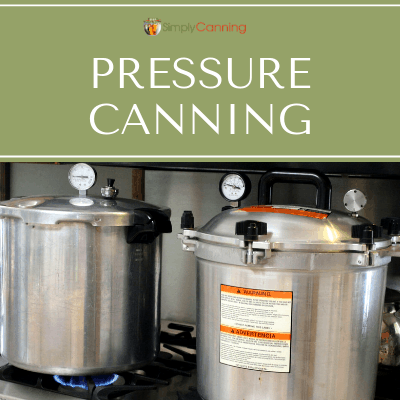Canning Food: How to Can & Know that Your Home Canning Recipes are Safe
This page may contain affiliate links. More Information.
While embarking on the process of canning food, many individuals ask: “What exactly do I need?”
Before you fill your first jar, or use your home canning recipes from your great grandmother, it is important to understand the science of what you are doing.
You need to understand how canning works as a method of food preservation. Learning these fundamentals will help answer many future questions, as well as the initial question of, “What do I need?”
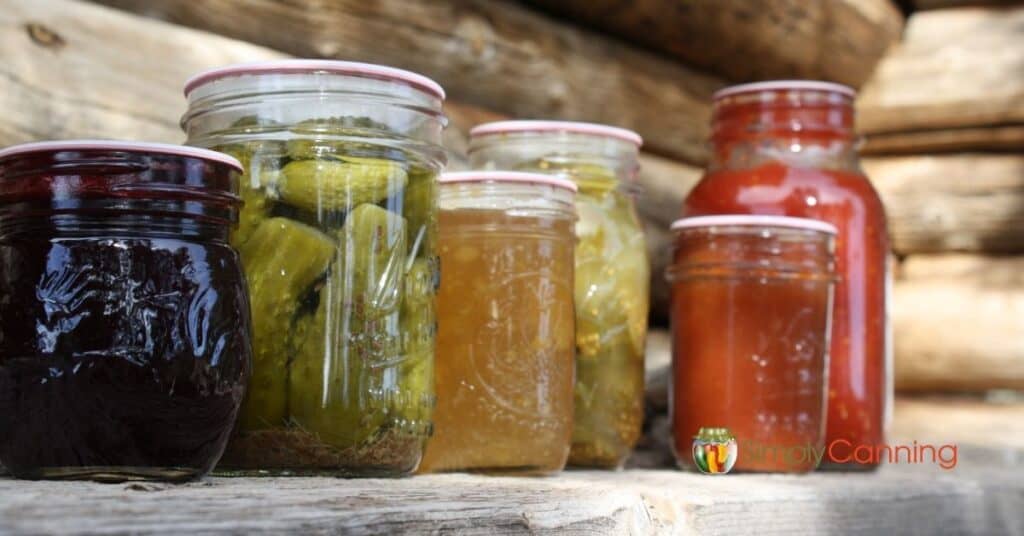
This Page Includes:
The Science Behind Canning Food: Chemical Changes & Microorganisms
When home preserving foods, you should be aware of two types of spoilage: Chemical changes and microorganisms.
Chemical Changes
* Enzymes cause the process of decomposition in foods. This starts as soon as food is picked Enzymes are why it is important to use fresh picked produce.
* Oxidation occurs when fruit is exposed to air. This causes browning in fruits like apples or pears. If you’re not careful, it may cause your fruit to look very unattractive.
Microorganisms
* Yeast. This is the main cause of fermentation and bubbling.
* Mold. This is the green, fuzzy stuff that we’re all familiar with. It grows in a wide range of foods and conditions.
* Bacteria is what causes Botulism. Botulism is a very serious type of food poisoning. It thrives in low-acid and oxygen-free environments. This bacteria will only be killed in very high temperatures of over 240 degrees F. These temperatures are achievable under pressure, but NOT in a water bath canner.
Repeat: Canning food in a pressure canner stops botulism, a boiling water bath canner does not. Botulism is a serious, but avoidable risk in canning low-acid food.
How Processing Stops Spoilage in Your Foods
During processing, as the contents boil, food spoilers are stopped and oxygen is expelled from the jar. As the jar cools after processing, its contents shrink and the lid is pulled down flat to form a seal. This prevents further contamination of the freshly sterilized foods inside the jar.
Remember, canning food in a boiling water bath will NOT prevent botulism. However, it will prevent yeasts and molds from forming, oxidation from occurring, and enzymes from acting in high-acid foods.
All fruits are high-acid foods. Pie fillings, jams, jellies and fruit spreads (such as apple butter) are all included in this group.
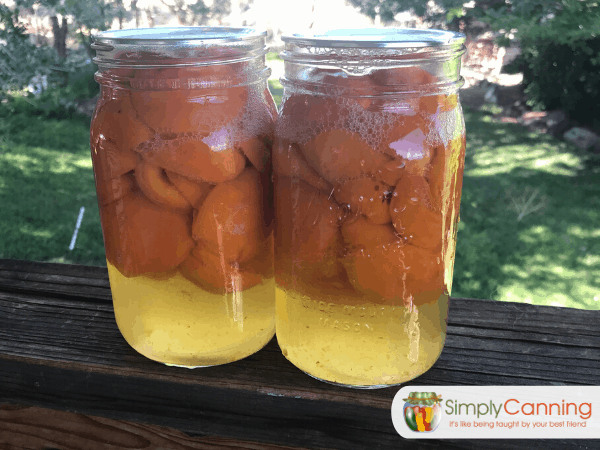


Pickled products have acid added during preparation, usually in the form of vinegar or lemon juice. Salsa, some condiments including ketchup and barbecue sauce, as well as dill pickles are included in this group. Because the acid is added during the cooking process, these are also considered high-acid foods.

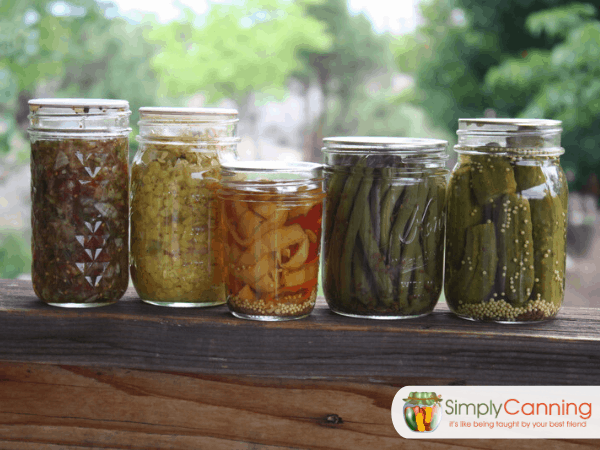

When processing jars in a boiling water bath, the heat achieved is about 212 degrees F. This temperature is sufficient to stop any yeast or molds from forming, as well as halting enzyme actions.
Pressure Canning – Prevents yeasts, mold, and oxidation. Stops enzyme action. Most importantly, it stops BOTULISM.

Vegetables and meats are low-acid foods. Botulism thrives in low-acid, low-oxygen environments. In order to safely preserve low-acid foods, pressure is necessary.
As in a hot water bath, the process involves heating the food in order to sterilize it and stop any spoiling factors. Once the jars are removed from the heat, the food cools and shrinks. As the food cools, it pulls down on the lid, forming a seal. Your food is then protected from further contamination.
The difference between the two food preservation processing methods is the amount of heat produced. A pressure canner produces a much higher level of heat. And remember, botulism can only be prevented at very high temperatures.
Canning Food FAQs & Tips
What Foods Can Be Canned?
Fruits, vegetables, and meats can all be canned. There are some foods that aren’t supposed to be canned, however, including dairy products, grain products, and processed meats. Occasionally, you may also run across a fruit or vegetable that requires special instructions. (For example, Asian pears require the addition of lemon juice, while pumpkin should be canned in chunks instead of puree.)
Is Canning Food SAFE?
Yes! Canning food is remarkably safe, IF you follow the proper instructions and tested recipes. I don’t want to discourage you from canning, or make you fearful of it. That’s not my intention. Canning food is really quite easy, once you get the hang of it. The one caveat is that you should follow tested recipes, to ensure your food remains as safe as possible. 🙂
Canning Food Safety Self Check…
Think about this statement… “My grandmother used a boiling water bath and boiled her veggies and meats for a very long time. This made them safe to eat.”
True or false? Why?
Answer to yourself, then scroll down to find what my answer is.

False – All vegetables and meats are at risk of botulism. Canning food in a pressure canner is the only way to assure that botulism is stopped. The higher heat will stop botulism. The heat produced in a boiling water bath will not.
Related Pages
When should you use a water bath canner vs. a pressure canner? Learn about the different canning methods here.
Botulism is the #1 worry for improperly canned food, but are we going on overkill? SimplyCanning.com goes into more detail.
We know more about bacteria and safety now. SimplyCanning.com explains the science!
Pin This to Find Later!
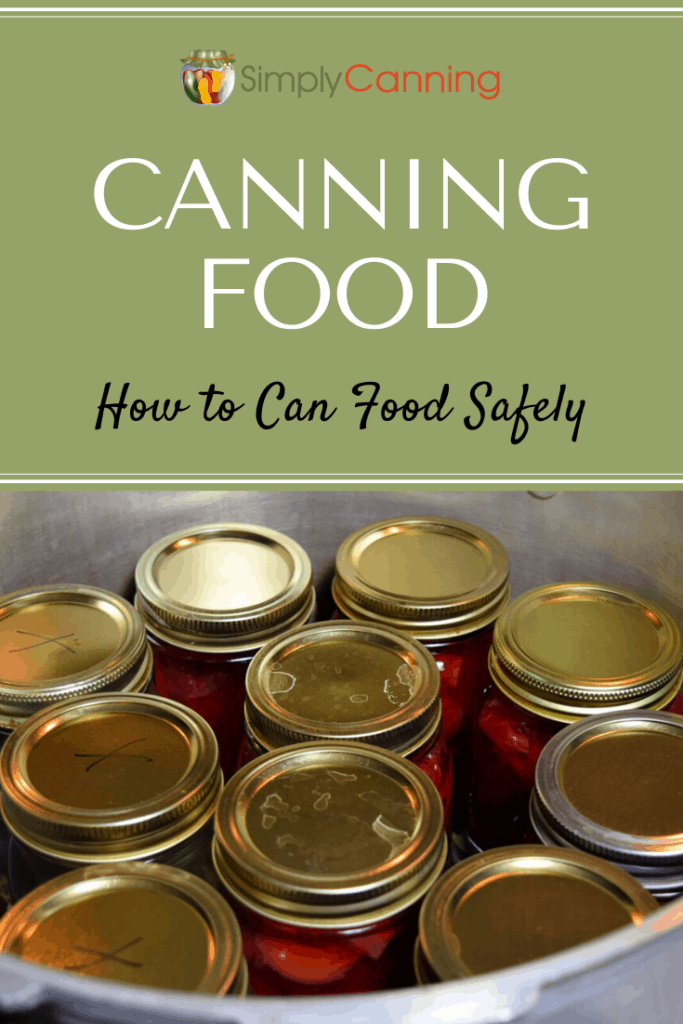
Page last updated: 10/23/2021


